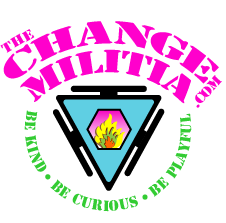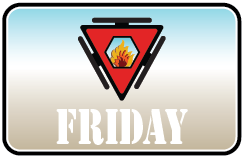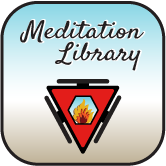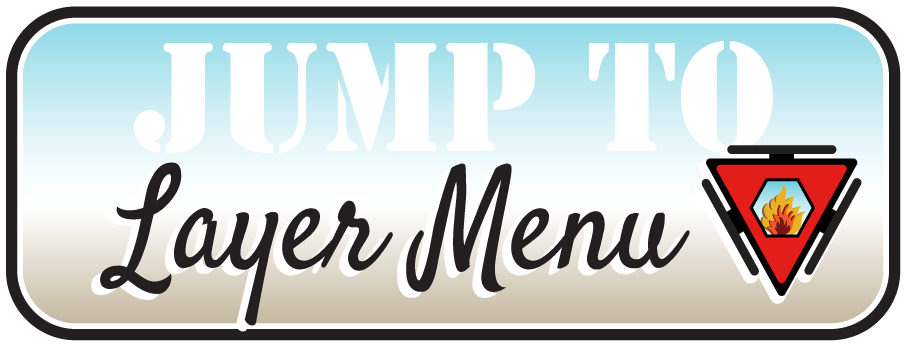
Layer Eleven, Week One – Sunday
- Read Week One Concepts
- Watch videos and read descriptions for Feeling Placed Limits and Charging Vibrations
- Do Movements – Feeling Placed Limits and Charging Vibrations
Where do you place the limits on your happiness? How happy is too happy? Begin to feel where you restrain, contain, and restrict yourself.
,Sunday’s Concepts
This week, you will learn about your tolerance level, finding resonance, entraining with your environment, and then raising the vibrations until they meet your intention or trajectory.
Understanding your tolerance levels will let you know how, when, where, and why you limit yourself. Finding resonance will allow you to connect deeply with yourself, those around you, and your environment. Entrainment creates a connection that leads to intimacy, collaboration, and community. When you raise your vibrations, you expand the aspects of your being and the components of your passions out into the environment where they can beneficially influence others.
Your tolerance levels are the limits set by you or your subconscious mind. This harkens back to our discussions on homeostasis and comfort zones (L6W1)
In the focus, I ask you to explore your limits and boundaries. Let’s talk about how.
Homeostasis is your physiology striving to survive. Similarly, your subconscious mind uses homeostasis to keep your non-physical bodies in a range that is familiar.
Your subconscious mind is very quick to disregard internal and external stimuli that it recognizes as safe. Your dog doesn’t bark warningly when it sees a very familiar face. The recognition and disregard of common stimuli allow your subconscious mind to move on to the next threat. Familiar ranges generate minimal threat identification.
Homeostasis in all your bodies is not primarily concerned with what is healthy, beneficial, growth, or success. That is important to remember. Homeostasis is about familiar. For something to be familiar, it must have history, some degree of security, and a level of established and embedded comfort or discomfort.
Most of what you do, think, see, feel, smell, hear, and touch is familiar. Your subconscious mind either pays it very little attention or it shunts your energy in its direction. When you begin to do, think, see, feel, smell, hear, and touch things that are out of your familiar range, your subconscious mind ramps up its threat detectors and distraction protocols.
Finding the edges of your ranges is incredibly powerful for several reasons. Your limiting ranges restrict, regulate, and restrain every aspect of every action and interaction that you have. Limiting ranges are the primary source of your triggers and you burn a huge amount of energy maintaining them.
Remember that limiting ranges require energy expenditures in all your bodies. If you fatigue or get exhausted, blame your limiting ranges. (In the past, I have often referred to your limiting ranges as comfort zones)
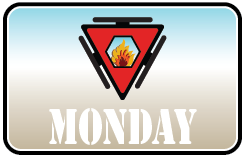
Layer Eleven, Week One – Monday
- Read Monday Concepts
- Do Movements – Feeling Placed Limits and Charging Vibrations
Where do you place the limits on your kindness? How kind is too kind? When do you stop yourself from acts of kindness? How do you limit the breadth of your acts of kindness?
Limiting ranges constrain and restrict you, they limit everything and everyone in your environment in the same ways. It is not just people with limiting ranges. Businesses, organizations, products, social and civic groups, families, and relationships all have homeostatic parameters (limiting ranges or comfort zones).
The Earth and all its creatures have limiting ranges too, even rocks. Rocks exist within specific ranges of pressure and temperature. Too much pressure and they, even diamonds, will break apart. Excess heat can cause cataclysmic changes including explosion, melting, or transformation into something else. Remember that video where carbon transforms into a diamond with heat and pressure?
Climates and microclimates are an example of a limiting range. Wladimir Köppen created the Köppen Climate Classification system and spent a good portion of his life refining it. He divided the planet into five major climate zones: tropical, dry, temperate, continental, and polar. He divided each classification into two or three climate types based on the native vegetation, seasonal precipitation, and average heat for a total of 31 classifications. Kudos to Köppen!
Picture your businesses, organizations, products, social and civic groups, families, and relationships as Köppen might. First, you might look at it generally, then with greater specificity. You could classify and subclassify them into labels, judgments, and limits, but that wouldn’t ensure that you will know what the conditions are in any given moment. Köppen’s passion was weather, the conditions I am talking about are energy movement, fears, threats, and opportunity.
To know the weather (energy configurations of the environment), you must get outside and experience it (because weather reports are seldom accurate). After you determine the current atmospheric conditions, you can’t label it and expect it to remain unchanged. To feel weather, you must experience it moment by moment.
If you have a business or are doing business with a business or are in the business of business, you will have an image of what that is, what it means, how it acts, and what it looks like. It will have an identity that you qualify and value. Those images, qualifications, and the resulting values are never completely accurate. Things change and as they change opportunities arise.

Layer Eleven, Week One – Tuesday
- Read Tuesday Concepts
- Do Movements – Feeling Placed Limits and Charging Vibrations
Where do you place the limits on your connection? Where and how do you maintain distance? How do you curtail the length and depth of interactions?
When you go outside and it is chilly or rainy, you have a choice. You can resist the weather or you can embrace it.
If you resist, you will be reactive. You will resist the way you typically resist by creating negative judgments and a demand that it be different. You will seek to limit your exposure (pun intended) and start looking for ways to distance yourself from it. You will create stories to confirm your disapproval. Usually, reactions set you up in opposition, contrast, competition, or conflict.
Reactions are a divergence from what is currently there, they move you away and create distance.
Responses are a convergence, conjunction, or union, they bring you closer and allow you to be a vital and integral part of the experience. When you embrace the weather, you open yourself up to new possibilities and previously unseen opportunities. You feel it as it is, connect to it, and begin to wonder how you can benefit.
The limited ranges (comfort zones) of everything and everyone around you are constantly changing and provide you with the endless options to react or respond. You have a choice.
Here is how to respond: acknowledge and be aware of the current condition by putting yourself in a place of allowance and acceptance. You meet the environmental conditions where they are without resistance, expectation, or judgment. You blend, merge, or intermingle. You become aware.

Layer Eleven, Week One – Wednesday
- Read Wednesday Concepts
- Do Movements – Feeling Placed Limits and Charging Vibrations
Where do you place the limits on your strength? How strong is too strong? When do you limit your presence? When do others feel overpowering?
Next, shift the energies in each of your bodies to resonate with what is actually there, not what you want, demand, or judge should be there. You entrain with the current conditions without trying to change anything.
Awareness is very intimate, specific, and fluid. It has depth and breadth. You feel your surroundings and the people in it as extensions of yourself. You feel them like you feel the tips of your fingers, the back of your neck, or the ache in your hip. You feel the longing, heartache, joy, and wonder as if it were your own.
You don’t take it on as your own, you feel it where it lives. When you cut your finger, you don’t try to feel the same pain in all your fingers, you feel it where it is. Empathy is the same way. If someone is grieving, you feel their grief where it lives, not where it lives in you.
When you feel what others are feeling in the way they are feeling it, you connect to them in their sensory language. Their pain, happiness, longing, and confusion is different than yours. It feels different to them. When you project your experience of pain onto someone else it is manipulation and creates a disconnect.
When you take on someone’s pain, you are connecting to the pain and not the person.
Taking on someone’s pain is martyrdom or idealism. It brings a feeling of aliveness, an increase in intensity … and a false sense of connection.
In reality, martyrs and idealists disconnect and feed off the pain, joy, or vitality of others. They use the energy of others for fuel and couch the theft of life-force as a sympathy, service, crusade, or compassion.
Idealists, as the name implies, connect to an idea, not the people or things connected with the idea. And they want to connect you to the idea as opposed to wanting to connect with you. Any collaboration is one step removed from a direct connection.
The biggest falsehood of the martyr and idealist is that they put others before themselves. Martyrs and idealists are users of others, they always put their desire to fuel their dysfunction in front of everything and everyone else. You can probably feel it when you are around them. It feels like they are sucking all the energy out of the room and leaving you spent. Okay, off my soapbox and on to the next step.

Layer Eleven, Week One – Thursday
- Read Thursday Concepts
- Do Movements – Feeling Placed Limits and Charging Vibrations
How intimate is too intimate with your partner, family, friends, coworkers, and strangers? How do you hold back the most vulnerable parts of yourself?
Once you are aware of the energy in all bodies of everything around you and have connected to it, you begin to radiate the qualities, movements, and components of the energies that meet your intention.
Let’s see if I can make a used car salesman analogy here: You and your significant other are thinking about an NTY SUV (new to you sport utility vehicle). You head to two different dealerships and a private party seller.
At the first dealership, let’s call them Devious Dick’s Derelicts, you are besieged by a bevy of boneheads before disembarking from your Buick. The first question they ask is if you are going to buy a car today. The second question they ask is what problems you have on your credit report. Then they ask which of you makes the decisions in your relationship. They point to a car that would be perfect for you without ever asking what you are looking for and your budget. If you haven’t left already, you should.
At the second dealership, Honest Hank’s Hotrods, you have the space and time to acclimate to the car lot before being approached. The well-dressed salesperson waves as he begins to head your way. He introduces himself and calmly asks if you have any questions or how he may be of service. You let him know what you are looking for and the price range you have in mind. He shows you what he has in stock and the selling points of each of those vehicles and leaves you to your musings.
When you drive up to the private party house, an immaculately dressed older man is washing a what looks like new SUV in front of a beautiful house with a perfectly manicured lawn. He greets you both warmly and asks if you would like a cup of tea or a glass of water. He tells you a bit about himself and asks very sincerely about you both.
Then he starts to tell you the life history of the SUV which he has named James, after his boyhood Springer Spaniel. He speaks intimately and lovingly about the care and respect given, recites the maintenance history, and shows you the two microscopic scratches on the underside of the back bumper. He pulls a notebook out of the glovebox with a running list of the fill-ups and resulting mileage. He points out the new tires and lets you know when the next service is and what it will probably cost. He opens the engine compartment, noting the added safety, performance, and economy upgrades he has had professionally installed.
Layer Eleven, Week One – Friday
- Read Friday Concepts
- Do Movements – Feeling Placed Limits and Charging Vibrations
How do you limit the amount you allow yourself to relax and rejuvenate in relationship? What defenses do you maintain? What tension exists persistently?
We have talked about the cycle: threat, familiarity, opportunity in L9W1 (Value is assigned hierarchically in three tiers. The first tier is threat, second is familiarity, and the third is benefit. Your mind, especially your subconscious mind, values what is beneficial last.) and in L10W4 (First, they look at you and determine your threat level. Second, they look to see if you fit comfortably into their familiar configurations. Lastly, they look for any opportunities that might be present.)
In the first example, the drunkards at Deceitful Dick’s instantly trigger your fear responses. You never get comfortable and certainly never get to the place where you begin to assess beneficial opportunities.
In the second example, the host at Honest Hank’s allows you some time to adjust to your new environment and lower your defenses. You get comfortable and he increases your comfort by being direct and not being pushy or demanding. But then the energy level stops increasing. You are offered possibilities but the energy of any opportunity must be initiated by you.
In the third example, your threat detectors never give you a twinge, you are immediately comfortable, and the opportunity is readily apparent. You recognize what a great vehicle it is as soon as you see it and he continues to expand that energy. You both are in love with the car and he continues to add value.
Knowingly or unknowingly, the private seller has created an environment where you feel unthreatened, comfortable, and open to opportunity. Once you are open to opportunity, he meets your energy and then begins to radiate his reverence, affection, and admiration of the vehicle.
As his energy expands, you both expand with it. You feel his vehicle love and it increases your LUV of the SUV. Your collaborative expansion generates momentum and a shared trajectory. That momentum will probably lead to a mutually beneficial sale.
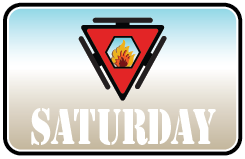
Layer Eleven, Week One – Saturday
- Read Saturday Concepts
- Do Movements – Feeling Placed Limits and Charging Vibrations.
Looking back on the foci for the week, what aspect of your being most hinders your ability to be fluid, intimate, and connected? What are some steps you could take to change your patterns?
Your goal is to be the elegant gentleman with a meticulously cared for SUV. Create an environment where trust is implicit, comfort is readily apparent, and then gradually increase the energy of your trajectory to add momentum.
Radiate your passion and others who resonate will join you on your path.
Let’s talk a bit about the subtleties of radiating energy. First and most importantly, radiating is not projecting.
There is a primal difference between projecting and radiating.
When you project, you have an agenda or objective. There will be a demand or expectation. You want someone to do something or something specific to happen. Projecting will always have a motive; some degree of persuasion, coercion, manipulation, or seduction.
Radiating is an expression of passion without undercurrents.
Pure radiant expression is rare. The elegant gentleman had the desire to sell his SUV but that was a distant second to his passion for the car. And, as importantly, he was transparent about his intention to sell the car. He didn’t spring it on them after they started loving it.
Learn your tolerance levels, find resonance, entrain with your environment, and then begin to raise your vibrations.
Next week, we will dive into your limiting ranges a bit more deeply.
Step 1 – Find a comfortable seat, take a few deep breaths, and allow yourself to settle.
Step 2 – After you have settled, feel for areas in any of your bodies that don’t feel completely settled. Look for new possibilities that would allow you to settle more deeply.
Step 3 – Feel for places, intentions, beliefs, and patterns where you presume, preconceive, and preclude.
Step 4 – Feel your existing and placed limits. What is too much or too little. What are your should’s and should nots?
Step 5 – Feel for the range, the upper and lower limits, you place on settling.
Step 6 – Spend some time and feel for the placed limits in each of your bodies. Once you find one, explore a way to expand or disregard it.
Step 7 – Take this Kriya and bring it into the rest of your day. Acknowledge that in every moment, in every situation, and in every interaction, you are limiting your expression in some way. These limiting expressions will exist in every body, every component, and every energetic movement.
Why it Matters – This practice is the secret ingredient that will unleash your superpowers. This is spinach and you are Popeye. When you expand your range, you expand your expression, influence, and the resulting changes you are looking to bring about.
Everyday Usability – This practice will help you expand the limits you place on every expression you make. Intimacy, affection, passion, curiosity, kindness, fulfillment, and happiness exist to the degree that you allow. Expand your range, increase your limits, and you will growth and evolve your ability to change the world.
Progression – After you have taken on your biggest limits, find the next biggest, and continue in perpetuity. As you do, effortlessness and fluidity will infuse everything you do and in every interaction you have.
(See Thursday’s and Friday’s Concepts for car reference)
Step 1 – Find a comfortable seat, take a few deep breaths, and allow yourself to settle.
Step 2 – Think of something you are passionate about.
Step 3 – Feel your passion. Allow it to upwell into your body.
Step 4 – Set an intention that your passion is going to expand and infuse into the area around you.
Step 5 – Radiate your passion into your environment by releasing the mental, emotional, and energetic limits you have placed on your expression of passion.
* This is not a mental process, you can’t think yourself into expansion. Expansion is emotional and energetic. You feel yourself into expansion by vitalizing or enlivening the sensations that accompany your passion. The experience of this will deepen as you practice.
Why it Matters – This practice will increase your ability to influence the world around you in an authentic and mutually beneficial way. It will help you discover the people, things, and places that resonate with you.
Everyday Usability – This practice will help you remove the limits you place on every expression you make. Intimacy, affection, passion, curiosity, kindness, fulfillment, happiness, etc. are all hampered by the laundry list of limits that stain your expressions.
Progression – After you can discern the feelings of radiating energy and passion expansion, use it in every situation you are in to deepen your connection, presence, and awareness.
